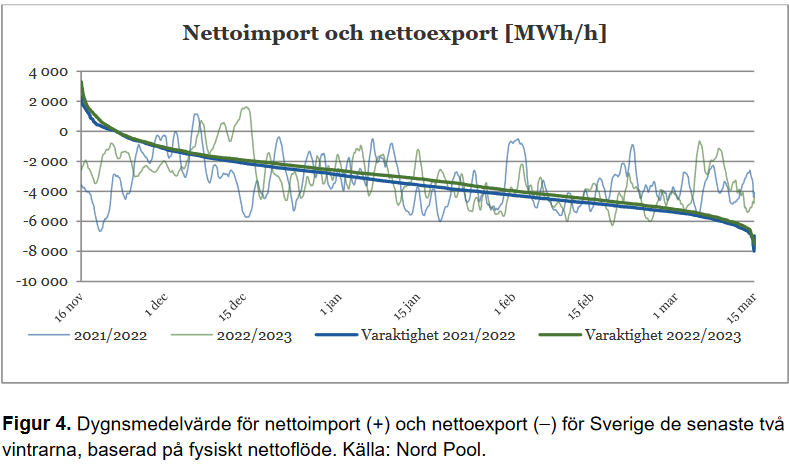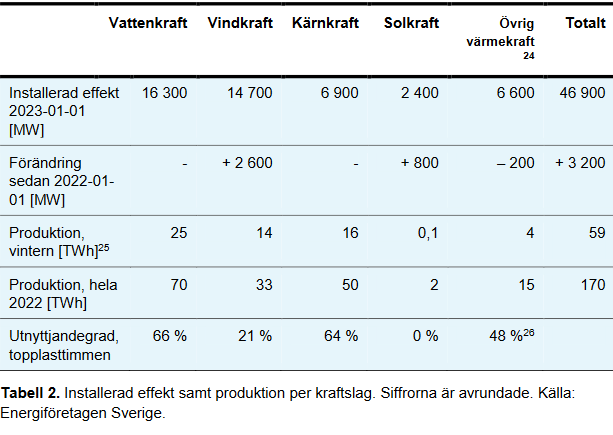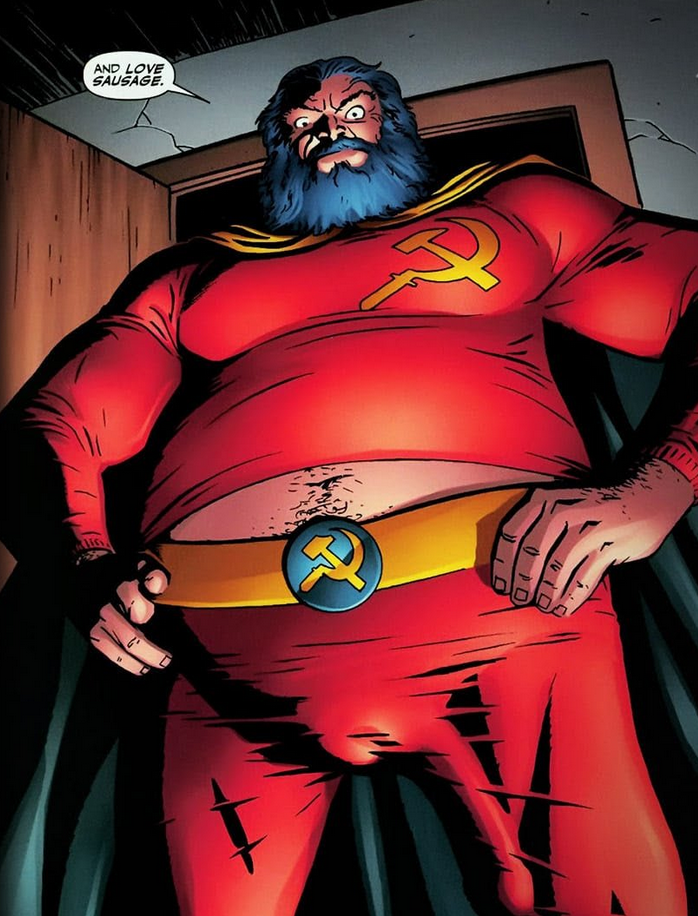Honestly I don’t care if it’s solar, wind, geothermal, biofuel, or nuclear, as long as it displaces fossil fuels. And it’s feasible on a very near time scale.
If Sweden did an honest investigation and found that renewables would be more costly and take longer, let em get nuclear.
We need an “all of the above” approach. This fight between nuclear and renewables is just stirred up by fossil fuel interests. Either is good. Both is good.
If Sweden did an honest investigation and found that renewables would be more costly and take longer, let em get nuclear.
Bullshit. Renewables are cheap as chips.
Think of a traditional power plant. There are 4 main cost catagories: Construction, Maintenance, Fuel, Demolition.
-
In a traditional plant, over the life of the plant Fuel will by far be the biggest cost.
-
For renewables, Construction, Maintenance and Demolition cost more (issues such as remote locations, weather, smaller generators means more generators which increases the mean time to failure) however they have ZERO fuel cost.
Renewable generation is profitable as fuck, moreso than nuclear. Your average wind farm pays itself off in less than 5 years.
This is a right wing government backing the interests of fossil fuels, by implementing policy that delays any meaningful reduction in fossil fuel use.
Sweden already has a significant surplus of electricity production, to the degree that we are one of the largest exporters in the EU and have had several bouts of negative spot prices this past summer.
However, we also have an effect deficit for the colder part of the year. Two-thirds of simulations by SVK (our national power distributor) find that the peak-load hour during the winter 26/27 will have a deficit equivalent to three gen-II nuclear reactors running at 100% (10’000MW), and 10 continuous hours of blackouts due to power shortage. This is during the coldest part of the year when solar is ineffective, and additionally is often combined with high-pressure fronts, which means low wind speeds.
In Sweden upwards of 75% of homes get their heating from electricity, and potentially a full day without power in temperatures of beyond -30°C would literally mean people freezing to death.
Our power bill for December was 800€, and we both have geothermal heating and reduced our indoor temperature significantly, averaging 14-18°C indoors for the month. This was more than January, February and March combined. Meanwhile, the bills for all summer months put together (May, June, July and I expect also August) cost less than the bill for April (100€).
The most viable short-term solution they’re looking at is (unfortunately) reopening old oil plants from the 60s & 70s however, this might not be possible either, due to newer EU legislations. Bringing them into compliance in time could cost 100’s of millions of SEK, which ironically is more than the “prohibitively expensive repairs” that the previous gov:t cited when they shut down 4 nuclear reactors 2015-2020.
Link to article for the doubtful - It’s in Swedish, so you’ll have to use a translator.
Assuming you’re telling the truth that there’s a massive shortfall in December already (a provable lie ) then you are suggesting the solution for an urgent shortfall of around a TWh per year is to build 10GW of nuclear plants which will be ready in 2045 for €300 billion and run them at an operating loss for 10-11 months per year.
This in order to provide low grade heat which could be stored in a district heating system for a few dollars per kWh for a total cost of about 3% of your suggestion or even in batteries for about 20% of the cost (which would also run at a profit the rest of the year and make the hydro go further).
Nuke shills say some colossally stupid things, but this really takes the cake.
Since you couldn’t be arsed to check for yourself before throwing out baseless accusations, here’s a translation of a relevant part from the linked article. I doubt you’ll read it, but it’ll be here for anyone else that stumbles across this thread.
The past winter was at times dramatic, for example when several nuclear power reactors were shut down for repairs. But thanks to the fact that mainly households had previously reduced consumption clearly in step with the rampant electricity prices, Sweden managed to maintain the power balance even in the worst hour, the so-called peak load hour.
“But if we had maintained the consumption, we would have had to cut down.”, says Lowina Lundström, Division Manager Systems at Svenska kraftnät.
The electricity had not been enough
At that time, the import would not have been enough to cover the electricity demand during the peak load hour on December 16, 2022, between 09:00 and 10:00. The import was then at a maximum of 3,290 MW, approximately equivalent to three nuclear power reactors, which was the highest level to date.
(Svenska Kraftnät a.k.a Swedish Power Grids is our national power distribution agency)
Btw, your source is 4 years out of date, and accounts for neither daily nor hourly power balance.
Here’s an up to date source on monthly power balance.
Here’s a report on peak loads in various northern european countries.
Here is an actual relevant source on the topic (again, in Swedish).

The above figure is taken from this report by SVK.
So the problem was nuclear being unreliable, and you can’t comprehend the idea of picking the worst recent year before dropping demand due to covid (or clicking on the year dropdown or hitting the hourly output).
The capacity factor for nuclear power in Sweden (including losses from curtailment) was 83% of installed capacity during 2022, which exceeds the global average for that year (80%), by comparison wind had a capacity factor of 26% for the year. Hence, the issue is not reliability, but rather a lack of capacity. 1700MW (20%) of nuclear has been decommissioned since 2018 (which is why those stats are entirely irrelevant to the current situation). Hence that a the unexpected outage of a single reactor (1160 MW or 17% of total capacity) could have such a large impact.
Even with that outage, nuclear power remained the energy source with the greatest capacity % during the 22/23 winter (80%), despite being lower during peak demand. “Kärnkraft” is nuclear power.

So, in summary, you are either clueless regarding our situation in Sweden (I sincerely hope that is the case) or actively spreading misinformation (which would be the more unfortunate option).
Another bullshit attempt at paltering. Capacity factor isn’t reliability. Failing unpredictably when needed and when asserting that it will work then is unreliability. Your own assertion is that the need was for a handful of hours when the nukes failed.
This is a right wing government backing the interests of fossil fuels, by implementing policy that delays any meaningful reduction in fossil fuel use.
Simply incorrect and ignorant and I could leave it at that.
But I won’t so here:
-
Nuclear is carbon neutral
-
The majority of Swedens energy production is still renewable and will continue to grow
-
Nuclear is absolutely necessary for load balance
-
Current nuclear plants are nearing their end of life and needs to be replaced
- I’m not critising nuclear for not being green.
- Renewables should grow (they’re profitable), but there should be further incentivised growth to help reduce reliance on fossile fuels more quickly.
- Yes, nuclear is brilliant for voltage and frequency stability. Large turbines have momentum in their spinning mass, when loads are switched on and off they keep spinning the same speed. However there are other options, eg rotating stabilisers, often used on very large ships but land installations are now being made also. These can be built without the nuclear red tape.
- Replacing existing nuclear plants is always a decent thing to do. You skip over many of the hurdles by building on the same site under the same nuclear permits. However taking money away from renewables to pay for this is questionable at best.
I think Sweden does have some geographical complications, along with a lackluster transmission network. These are much harder to get private investment for. However if there was a decent transmission network then there would be more utility of renewable generation in the north as well as the capability for import of energy from neighbouring countries or even export when Sweden has an excess.
Putting my balls on the table, I reckon if Sweden put all the money they’ve got in nuclear into transmission first and then renewables, I reckon they could switch off more fossil fuels more quickly.
The points I listed are the strongest arguments to expand nuclear power which both the left and right of Riksdagen generally agrees on.
So how this is a right wing conspiracy to further the fossil energy industry as you point out is still to me a mystery, that’s all you need to explain.
The fact that left and right wing parties both currently (in the middle of soaring energy prices and a cost of livings crisis) agree with measures that support fossil fuel interests does not change the fact that the Swedish government (which is currently right wing) is implementing policies that benefit the fossil fuel industry.
Also, I question the nuance in that - I’m sure many in the left that support nuclear investment, but are less happy about renewable targets being scrapped.
However I apologise if I came on a bit too hard with it being a left vs right wing issue. It’s wealth vs society.
i heard that nuclear still kind of heats up the earth since its not outputting what has been put in by the sun before. Supposedly thats a problem since space is a good insulator.
It’s a negligible amount of heat. Something like 0.000001% of the greenhouse effect from fossil fuels. Almost unmeasurable.
-
have you ever been in Sweden? it is a a rocky mountainous and mostly dark region. they only renewables that they can easily manage is geothermal and iirc they do not have the correct crust for it
According to another comment they have plenty of renewables up in the north but only use about 30% of that capacity. So it seems the main issue is with the transmission network for the country, its ability to get power from one place to another.
Instead of investing in 20 year nuclear power plant plans, they should be looking at accessing and expanding the available renewable generation in the short term.
the wind mills would be in inaccessible areas so you are better to just go with nuclear and invest in transmission from settlement to settlement instead to the turbines
deleted by creator
-
Yeah 100% agree with you. I’m surprised that this is the case given the 2045 time scale but we’ll have to wait a couple of decades and see how it pans out I guess.
Imo, renewable should still be the target, nuclear should be the bridge towards renewable until it’s feasible enough
Which is exactly what they’re doing if you read the article.
Building a stop-gap that will be ready 20 years after you get to the main destination for 10x the price isn’t a bright move.
This would be a stronger argument, if it wasn’t 20 years old already.
The best time to ignore the nuke shills and build wind and solar was the 1940s when both wind and solar thermal were proven economically and fission hadn’t happened yet.
The second best time is now.
The best time to ignore the nuclear scare mongers us whenever they open their ignorant mouths.
You’re confusing tired contempt with fear.
No, you definitely have an irrational fear of nuclear power.
Removed by mod
I disagree… the biggest “issue” I have with “renewables” is the storage problem… That 20 years gives you time to figure out something while reducing the carbon output
Battery storage is already cheaper than nuclear.
…no it won’t because the new nuclear will generate nothing for 20 years. Whereas the renewables will reduce some carbon, even if we pretend that storage is both unsolvable (as opposed to already cheaper than nuclear) and necessary in a grid that’s already 40% hydro.
One of the biggest problems that we have today when it comes to energy production (and a whole lot of other things) is putting all our eggs in one basket. Well how the fuck does this change anything?
I am not anti-nuclear, but dumping ALL renewable targets is moronic. Now you’ve simply replaced one egg for another egg, but it’s still just ONE egg. A stable energy portfolio is diversifying your sources.
The article doesn’t say if they intend to have 100% nuclear or if they dropped the target of 100% renewable to have a mix with more nuclear
Great observation 👍 could well be a misleading title
Dosent sweden already have a fairly high and fairly stable energy production through their hydroelectiric power plants . Wouldnt it be better to just build more of those.
We do, but enviromental regulations pushed through during the past two decades is essentially preventing any new or expanded hydro projects. In fact, a lot of smaller hydro plants are instead being demolished due to being incompatible with these laws.
What? They are demolishing hydro plants? Do you have a source for that?
Below is a news article from Swedish Television (SVT) translated to english using LLM. Couldn’t find it in english. Original article
New Stringent Environmental Requirements Threaten Small Hydropower Plants
Published on May 10, 2022
Over a 20-year period, around 1,800 small hydropower plants in Sweden are set to have their conditions re-evaluated by the land and environmental courts to ensure they meet the requirements of the EU’s Water Framework Directive. According to hydropower plant owners, these evaluations entail strict demands and increased costs that threaten the existence of culturally significant small hydropower plants.
Located along the Alsterån River in Nybro Municipality, one of Magnus Edvinsson’s hydropower plants has been in operation since the 1800s. He, like many other owners of small hydropower plants, is facing upcoming re-evaluations of environmental conditions to determine if they comply with environmental legislation.
According to Magnus Edvinsson, the measures and court costs could spell the end for many small hydropower plants.
“We’ve seen costs of 10 million Swedish Kronor for a single small hydropower plant. That completely shatters the economy of a company like this,” he explains.
Ensuring Fish Passage
The aim is to establish modern environmental conditions for all watercourses in Sweden. This includes promoting biological diversity, which might involve requirements for fish passages to be built, allowing aquatic organisms to move freely in the waterways.
The Water Authorities have determined that each water body must achieve good ecological status. According to Magnus Edvinsson, the environmental quality standard imposes excessively high demands and could result in costly reconstruction efforts.
“In our industry organization, we’ve already received indications that 30 percent of the small hydropower plant owners in the initial review group are considering dismantling their facilities even before the court review takes place. It’s not unlikely that it could reach up to 50 percent choosing to decommission once they are in court. It’s a shocking figure, and this is happening at the same time as we are experiencing the worst energy crisis in modern history,” says Magnus Edvinsson.
I’m not sure the situation in Sweden, but usually the easily developed hydro sites have already been built, and any remaining sites will be quite expensive compared to power generated. Additionally, climate change can threaten the reliability of hydro as snowmelt and precipitation become more unpredictable. Also, they generally have a fairly large negative environmental impact aside from climate change.
I’m sure there are some projects that will pencil out but probably not enough to decarbonize the whole energy grid.
Yeah afaik there are a couple of suitable places for more hydropower but no plans for more due to, like you said, local environmental reasons.
That said, sweden is basically already completely “decarbonized” (if anything can really be decarbonized), we only have a reserve oil powerplant that runs for maybe a couple of days each year (~9 days last year, though last year was especially bad). Sweden also generally has a pretty big net surplus (usually about 10-20% of production) of green power that is sold to the european grid.
Swede here.
Just clarifying some things.
Sweden is not dropping renewable energy. We are (at least for now) going to include nuclear energy among the other alternatives such as water, wind and solar.
But here’s one of the problems we are trying to solve with nuclear power:
Sweden is a major producer of high quality steel and we have set a target to become CO2 free in 2045 when it comes to steel production.
Currently the steel production in Sweden is responsible for 5500000 metric tons of CO2 per year and we have plans to go 0 CO2 by 2045.
To be able to do this we need, just for the CO2 free steel production, 70 TWh per year.
In 2020 there were 4333 wind turbines 26TW of electricity in Sweden. While you might think that we’d just build 9000 more it will not likely not solve the main problem with wind and solar power production: reliability.
So either we continue using fossil fuel to produce steel or we don’t. It’s as easy as that.
Reliability is done by redundance. Build 18000 of them. Also Sweden have plenty of hydropower as well. Worked on windpower in Sweden and seen the maps. Shitload of potential. The real reason is who filled who’s pockets.
I don’t get why people here are so hyped. Why is it a good thing to completely dump renewables?
It’s just the target being dumped. We can’t go 100% renewable and have nuclear. So by expanding nuclear the target has got to go. Renewables will still be expanded in Sweden.
It means your gas shares will pay dividends for a few extra years.
People here have better reading comprehension apparently and know that dumping a 100% target doesn’t mean dumping renewables.
Going ‘all in’ on something usually means neglecting everything else.
A low carbon energy source is useless if it cannot cover peak loads, which are now being covered by fossil fuels. Years of greenie obstructionism now means that the nuclear plants that would have been built are now missing, and the solutions offered by the anti-nuclear lobby seems to be “let them have energy poverty, brownouts and outright blackouts are not our problem”. This will happen once coal and oil plants shut down, renewables alone cannot cover the demands, especially at peak load.
Peaker technology is best replaced by batteries. Powerwalls and V2G has already been shown to dramatically reduce brownouts and need for Peakers. You need to educate yourself a bit. It’s not 1995 anymore.
deleted by creator
https://electrek.co/2023/01/03/neoen-announces-tesla-megapack-project/
Come on man, it’s not 1995.
deleted by creator
You’re just wrong. Battery systems smaller than this have already paid for themselves reducing brown outs and dramatically reducing or eliminating the need for peaker plants, which are always the worst for the environment. This is only about scale and the cost of batteries has dropped dramatically just in the last few years. Again, it’s not 1995.
deleted by creator
Facts are facts bra. The technology is there, it’s proven, and only getting better and cheaper.
Such an absolutely brainless response. Of course renewables alone can cover the demands, and they’re our only option since nuclear energy is inherently dangerous, extremely expensive and damaging to the environment and climate due to the immense amounts of concrete required. Furthermore, grid-level storage is a made up problem with regard to renewables, we could easily cover peak demands by expanding hydroelectric pump storage systems and reservoirs, and potential new battery solutions would make this even less of an expense.
If you’re going to claim a response is brainless you should at least try not Maki a brainless response yourself. Nuclear isn’t inherently dangerous, and is better for the environment in the long term.
Climate harm is a matter of degrees, I think.
Why isn’t a few tons of concrete worth eliminating so many emissions?
i like these comments. just have to read the first sentence to know when the blud has knocked himself out of the conversation.
For those advocating an all renewable energy grid. You cannot reliably power big industrial factories and infrastructure with renewables only. The answer NEEDS to be: nuclear as a base, and a heavy push towards decentralized renewable grid on top.
You can if you spend times on batteries/energy storage. The question is where the trade off is optimal.
10 reactors? How long is that gonna take to build? A single reactor can take at least 8 years. So hopefully they aren’t ditching renewables all together. You can build a lot of solar and wind farms in those 8 years.
This is exactly the issue. Nuclear is necessary in the long term for a clean grid, however it will take much longer than as well as take investment away from renewable projects - which could achieve net zero more quickly than nuclear.
We should be going hard on current renewable technology, build out a massive excess (to account for reduced generation, the wind is always blowing somewhere and the sun shines throguh the clouds), and then once we have met all our energy needs from clean energy and phased out fossil fuels we can focus on fortifying the grid - in particular at that point we will need large turbines with lots of rotating mass, for voltage and frequency stability, which is a perfect role for nuclear to fulfill.
They are though. Focus on fossil fuels now and promise nuclear later - thats the plan.
Removed by mod
Wrong
At least I hope they have the good sense to build the plants somewhere relatively remote, just in case of a leak.
Here’s me thinking I’d left the nuclear shills behind on Reddit. Nuclear is expensive, takes forever to build, and produces unacceptable waste. Renewables are much cheaper and MUCH quicker to implement.
Most corrupt government ever in Sweden. That’s the reason
LFTR when 😭
When the words “experimental nuclear reactor being built near you” doesn’t attract massive groups of protesters fueled by the coal companies, allowing for the tech to actually be built and tested
Fucking idiots.









